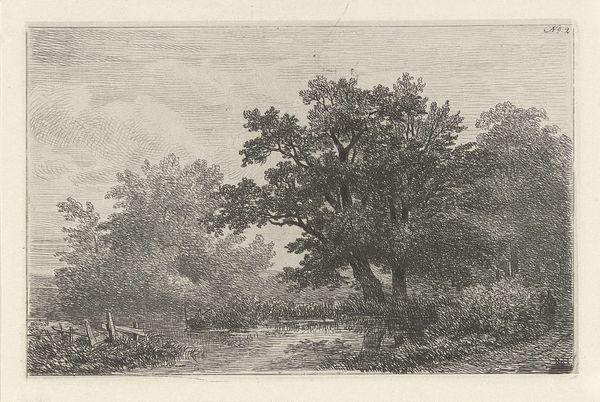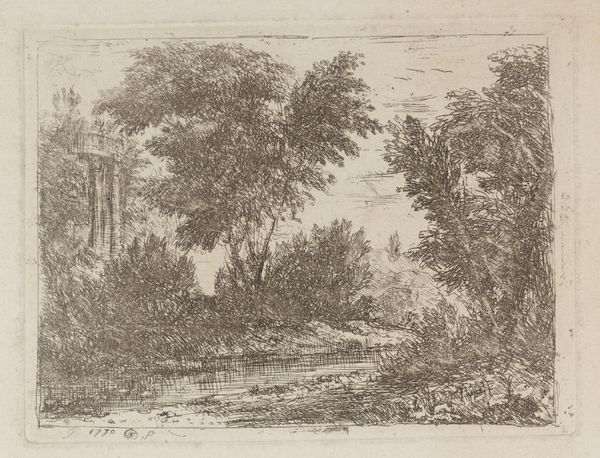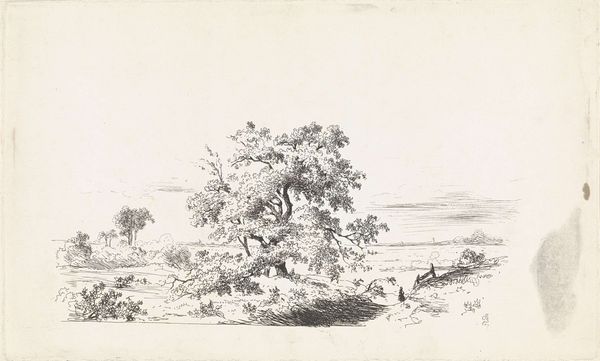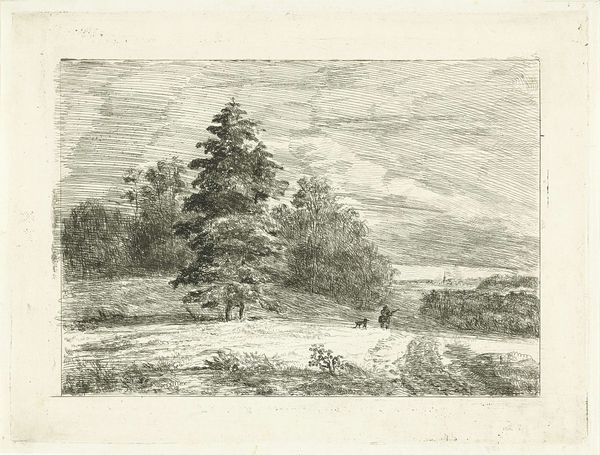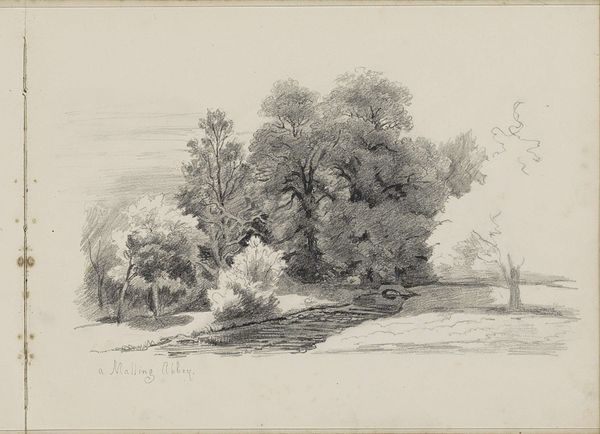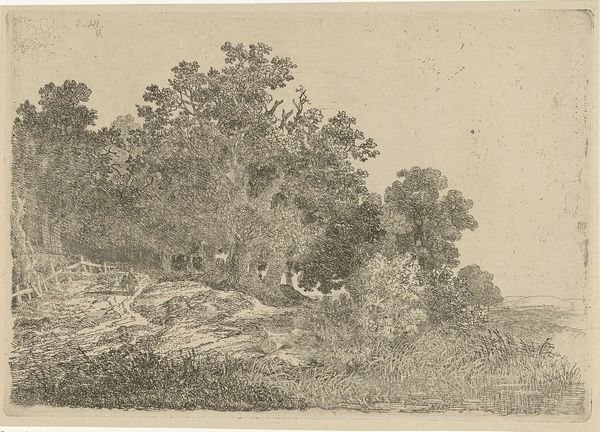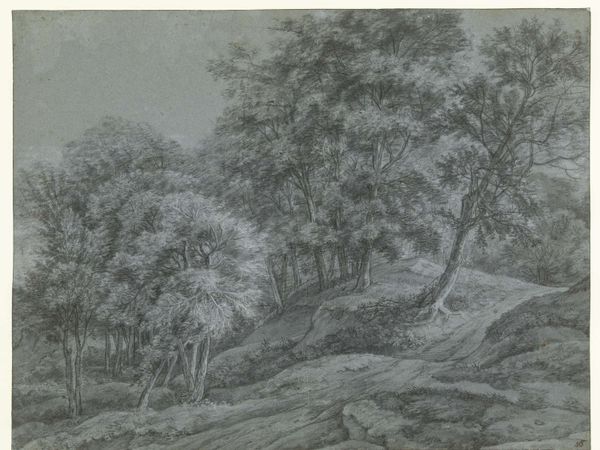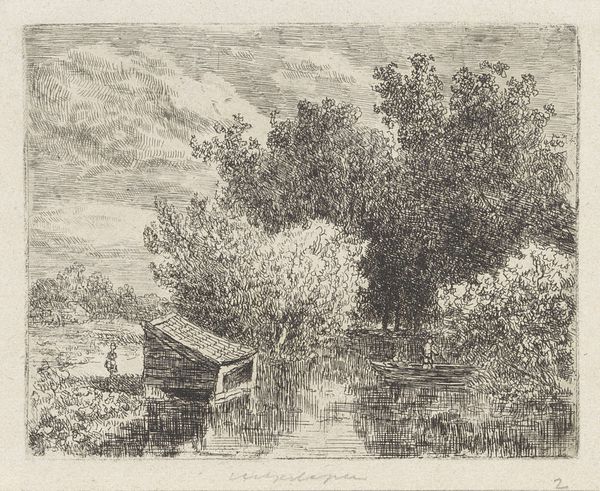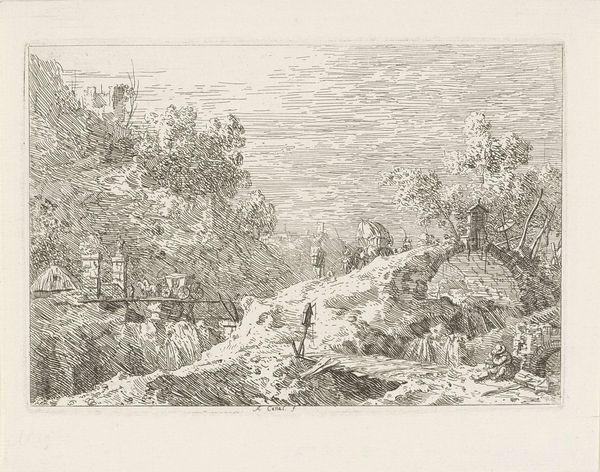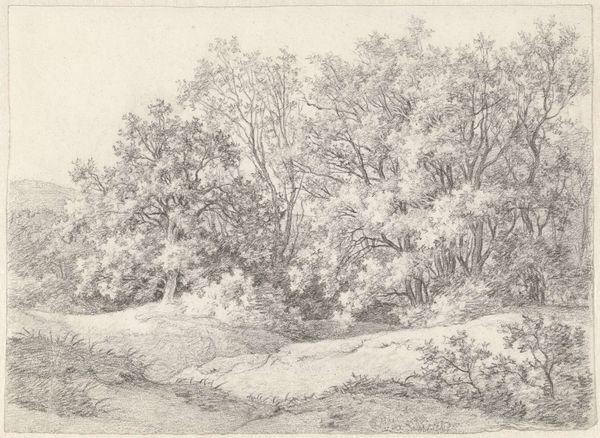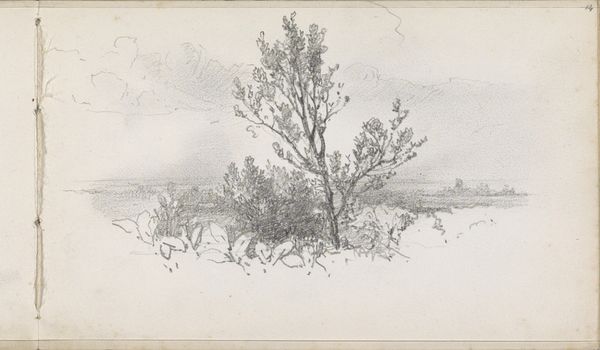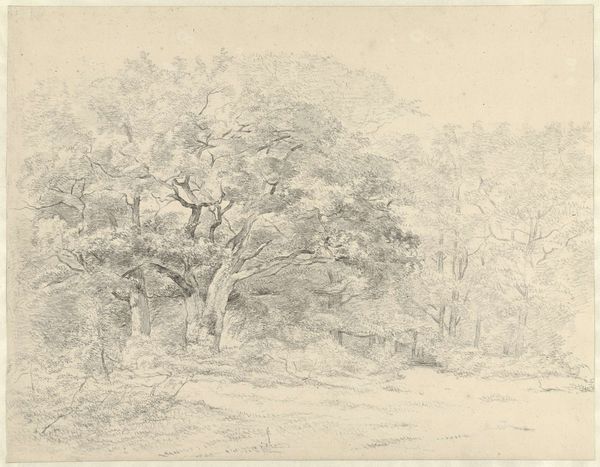
Dimensions: height 175 mm, width 229 mm
Copyright: Rijks Museum: Open Domain
Curator: Ah, yes. Let’s spend a moment appreciating Charles Rochussen's "Vaas," an engraving created sometime between 1824 and 1894. It resides here at the Rijksmuseum. Editor: The initial feeling is melancholy, isn't it? The way the light struggles to pierce through the dense trees, the detail given to the shaded areas... it has a rather contemplative, sorrowful quality. Curator: Note the labor invested in such detailed engravings. Rochussen wasn't merely depicting a vase; he was also engaged in a complex system of production involving specific tools, workshops, and publishers. This artwork reflects broader industrial and artistic changes of the era. It raises interesting questions regarding craft, artistry, and commerciality during the Romantic period. Editor: True, but look how the vase becomes the focal point, contrasting the organic disorder of nature with the formal geometry. The interplay of textures between foliage and the clean architectural form draws you in to this interesting focal point. And how light subtly hints at the object's own shape. Semiotically, that vase acts as the anchoring point for the eye. Curator: How did engravings, affordable prints, influence broader cultural tastes, shaping how people visualized landscapes or gardens? Rochussen worked primarily with the medium of prints; to what extent did this availability make landscapes more ubiquitous than paintings hung in the wealthy collectors' mansions? How do printed landscape designs enter a discussion about wealth and status during this time? Editor: Beyond these material considerations, notice how Rochussen used his engraving skills to create such striking texture and light contrast. The details invite introspection through an evocative landscape composition. Note, too, the careful graduation of light tones which guide the eye throughout. It gives rise to pondering its very symbolic form— perhaps acting as some representation for grief. Curator: It makes one consider the rise of the middle class and their consumption of affordable art—democratizing artistic patronage. Was an appreciation for carefully arranged scenery merely available to the landed gentry? These small affordable scenes provide answers by indicating wider tastes from people involved within the process—and wider production of commercial engraving beyond unique handmade goods. Editor: I hadn't considered its ties to labor at all. I've gained so much clarity after today by just carefully studying "Vaas," beyond feeling melancholic! Curator: Yes, together we teased out different nuances within Rochussen's captivating scene using social-cultural circumstances coupled with intrinsic compositional strategies—to arrive at seeing wider contexts around prints—as accessible affordable tools created for visual instruction and romantic engagement!
Comments
No comments
Be the first to comment and join the conversation on the ultimate creative platform.

